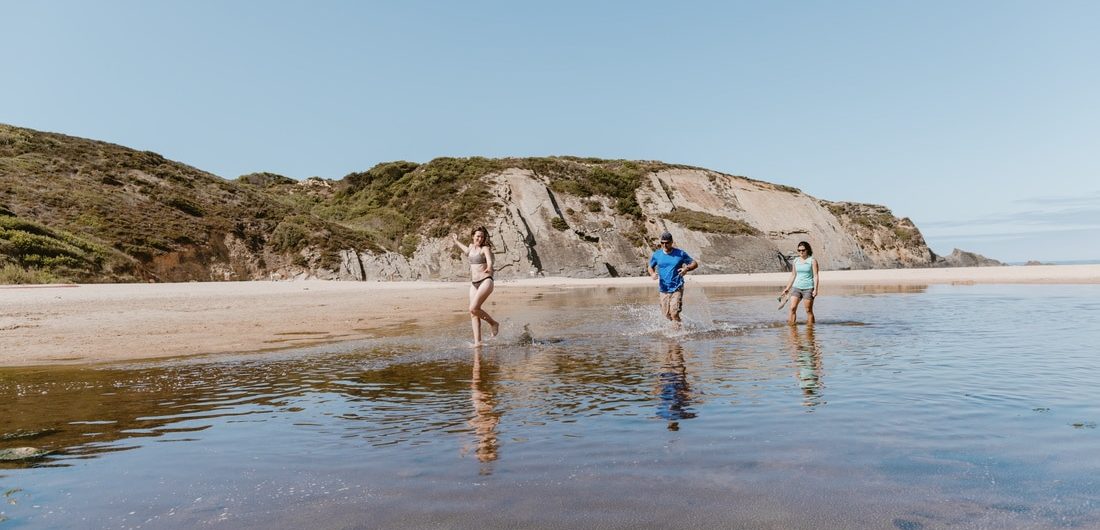Portugal is a popular destination for Northern Europeans for the same reason Florida is popular with North Americans: Plenty of sun, sand and sea make this part of Europe ideal for beach vacations, and mild winters and short flight times from almost all major capitals provide a quick escape from ice and snow (especially popular with golfers). But springtime here holds some special benefits for savvy travelers:
For walking, hiking and cycling holidays, summer temperatures in some areas of the peninsula, especially inland or further south, can be hot, and winters often damp. But balmy spring is just right. From March through May, temperatures are typically in the sunny Fahrenheit 60s throughout the country, perhaps climbing into the low 70s in the south. It’s a great time to head outside and get physical!
Portugal is best-known for its summer beach resorts, so spring is normally a less crowded time to visit—with the exception of Easter Holy Week, when religious festivities throughout strongly Catholic Portugal and Spain and coincidental school holidays mean many locals hit the highway. (Easter is on April 17th this year; Holy Week is the week before.) There are some other interesting things going on during this season, though, where any crowds will at least be more geographically concentrated: Portugal’s Freedom Day on April 25th, which marks the end (in 1974) of what had been the longest dictatorship in Europe, and is usually celebrated (particularly in Lisbon) by concerts, parades and events. May 12th and 13th are marked by pilgrimages to Fátima, in central Portugal, where in 1917 three shepherd children saw the first of six apparitions of the Virgin Mary. University students are graduating, so in towns like Coimbra with famous old universities you may see them strolling the streets (and singing!) in their traditional robes. Throughout the country, this is a time when outdoor food, book and music festivals begin again. The sun-loving Portuguese revel in this yearly re-awakening.
An added plus of the off-season: Lower flight prices.
Spring is wildflower season! From March through May, Portugal is in spectacular bloom. Especially in the Alentejo—the large agricultural regions that stretches across the country from the Atlantic coast to the border with Spain, from just west and slightly above Lisbon in the north to the narrow strip of the Algarve resort region in the south. All of Portugal is a riot of color at this time of year, but the Alentejo is really not to be missed. If you happen to be anywhere in the Portuguese countryside on Ascension Day (which always falls on a Thursday, 40 days after Easter; this year it’s on May 26th), you can pick your own “ramo de espiga” (sprig of wheat bouquet) to bring you luck. This is an old custom from pagan times, with specific elements that each have a special meaning. You need a sprig of wheat, to represent bread (enough food to eat); daisies, for silver and gold (wealth); olive branches, for peace; poppies, for love and life; a bit of grape vine for wine and joy; and rosemary, for health and strength. Traditionally, it gets nailed up on the back of the front door and stays there until the following year, to grant protection and prosperity.
All those flowers aren’t the only things in season. Eating in Portugal is always a celebration of what’s in season, and here spring brings sweet early strawberries, tender asparagus, apricots, perfect plums, and, come May, the juiciest cherries. Fresh produce in Portugal at its peak is one of the greatest pleasures the world has to offer.
Book now a Terracotta Journeys Spring walking or cycling tour.
By Holly Blades

